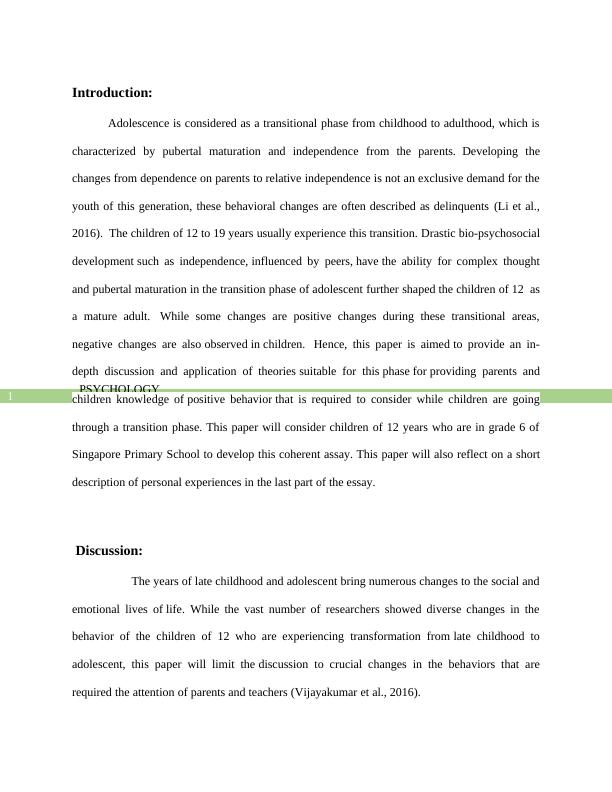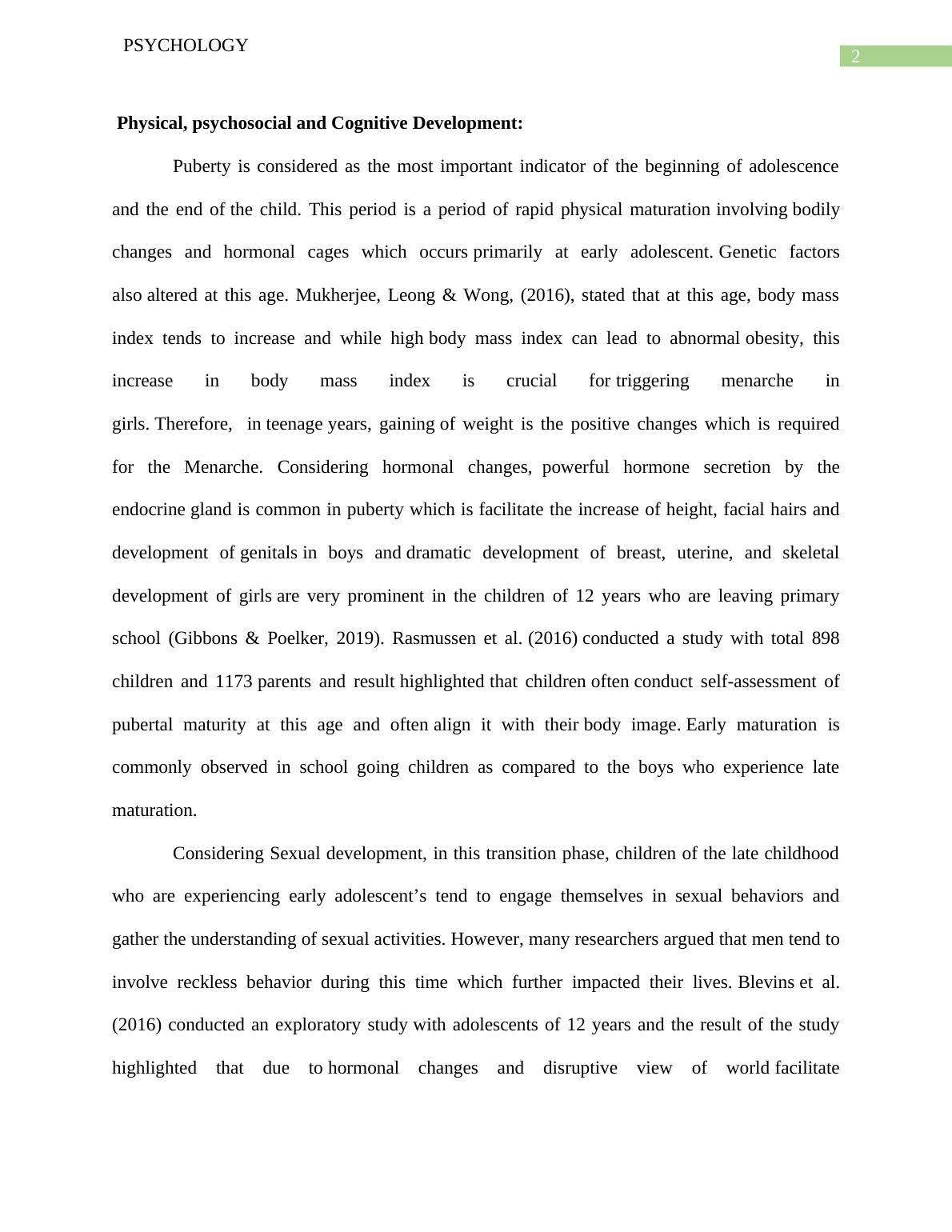Name of the university: A transitional phase from childhood to adulthood
The assignment requires a 2000-word paper on the transition from late childhood to adolescence, with APA referencing and a cover page.
13 Pages3529 Words331 Views
Added on 2022-10-13
About This Document
PSYCHOLOGY PSYCHOLOGY 12 12 PSYCHOLOGY PSYCHOLOGY Name of the student: Name of the university: Author note Introduction: Adolescence is considered as a transitional phase from childhood to adulthood, which is characterized by pubertal maturation and independence from the parents. While the vast number of researchers showed diverse changes in the behavior of the children of 12 who are experiencing transformation from late childhood to adolescent, this paper will limit the discussion to crucial changes in the behaviors that are required
Name of the university: A transitional phase from childhood to adulthood
The assignment requires a 2000-word paper on the transition from late childhood to adolescence, with APA referencing and a cover page.
Added on 2022-10-13
ShareRelated Documents
End of preview
Want to access all the pages? Upload your documents or become a member.
Physical Development in Adolescence Age Group 12-18 Years
|13
|859
|349
Physical Development of Children from 12 to 18 Years: Puberty, Growth Spurt, Menstruation, and Body Image
|16
|1133
|324
Adolescence and Human Development: Key Events and Theories
|8
|2064
|190
Human Development in Adolescence
|8
|2188
|158
Developmental Psychology - Puberty, Teen-Parent Conflict, Love and Personality Traits
|7
|1443
|309
Human Development Across the Lifespan
|7
|1625
|393




